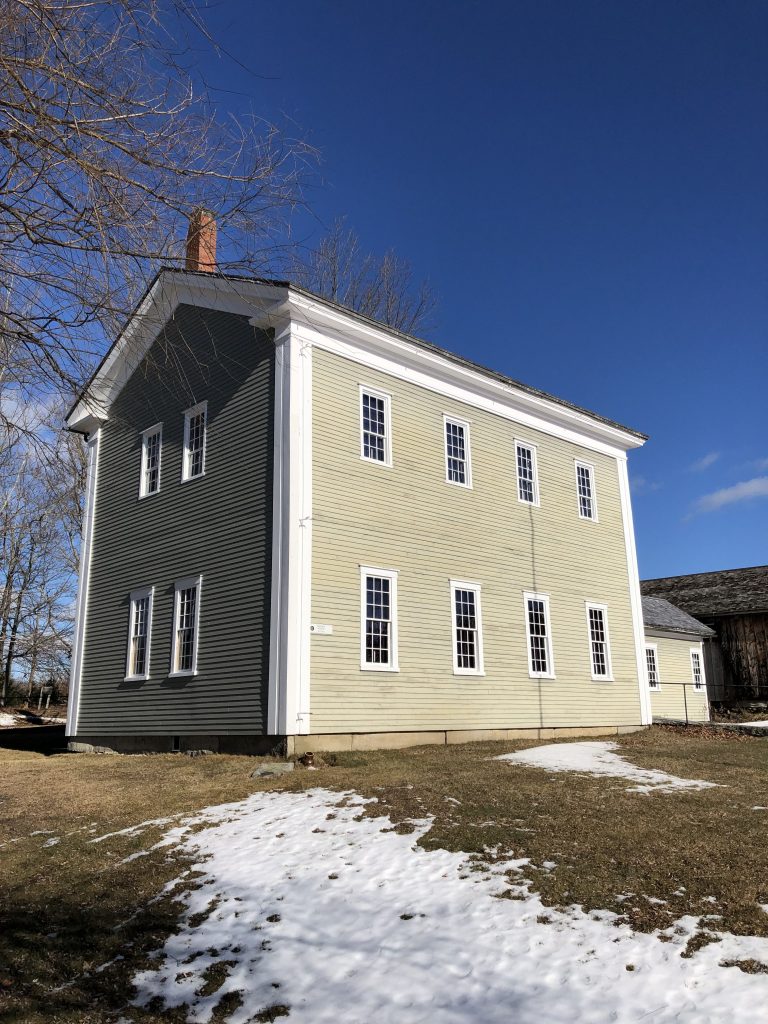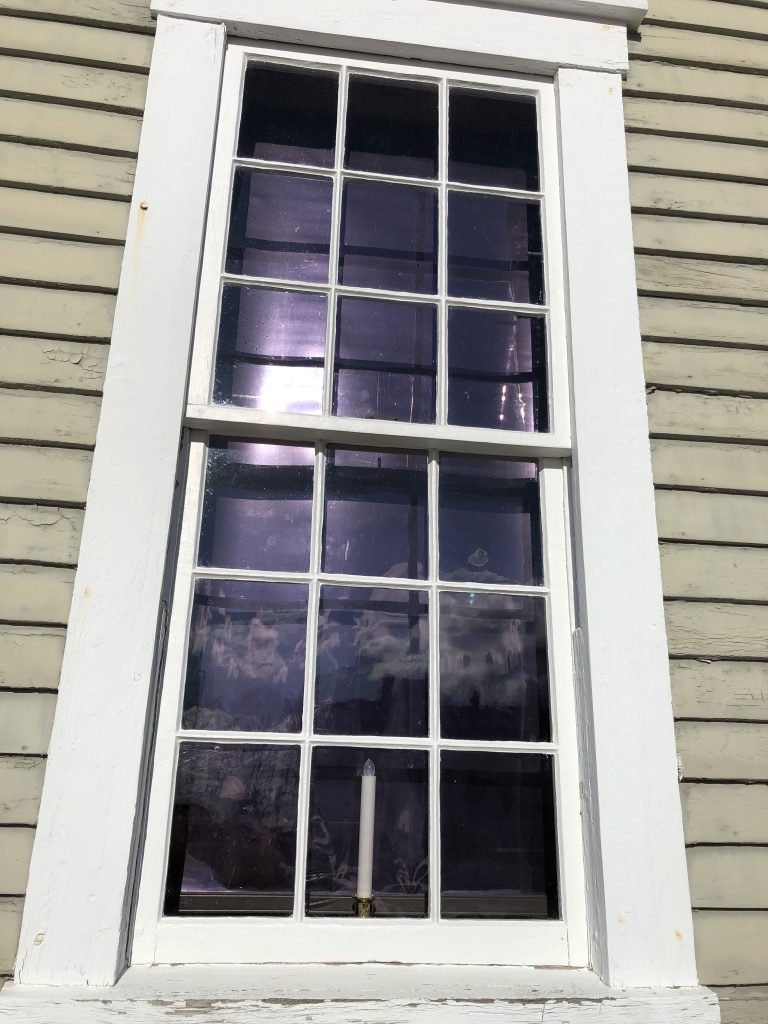By spring, staff at Canterbury Shaker Village expect to complete restoration of the Schoolhouse (c. 1823/63), a project made possible through key financial contributions, including a $10,000 grant from Daughters of the American Revolution.
Begun in 2021, the multi-year project has included a new roof, repair and partial replacement of deteriorated clapboards, gutters, rainwater leaders, and other exterior features, along with repainting and restoration of 26 windows.
“This was a complex project that required a lot of coordination and effort,” explained Leslie Nolan, Executive Director of the Village. “We are grateful for everyone who worked on this project and the support that made it possible.”
In addition to support provided by Daughters of the American Revolution, additional project funders included The 1772 Foundation in cooperation with the N.H. Preservation Alliance, Cogswell Benevolent Trust, and Eppes-Jefferson Foundation. The project was also supported by money raised through NH Gives in 2020.
Regarding the effort(s) to complete the project, Nolan said the Village worked with professionals with specific renovation and preservation expertise in historic structures. She cited Jake Farmer of Farmer’s Historical Repairs in Pittsfield, New Hampshire as one example.
“Jake was phenomenal in his attention to every detail,” she said. “Restoration is truly a labor-intensive process.”
Responsible for repainting and restoring the Schoolhouse windows, Farmer said he started each window by first removing the sash around it. He then scraped the old paint off the window, which included the removal of old glazing, and then covered the bare wood with linseed oil.
“Some panes were re-bedded in glazing that needed it,” said Farmer. “I repointed with glazing tacks, reglazed the windows, and primed and painted after they dried … I also cleaned the locks and oiled them.”
The entire process, according to Farmer, took a substantial amount of time due in part to his methodology. “The quality of the construction of these windows was impressive, and so it was possible to repair and not just replace them,” he said. “I appreciate the Village’s approach to preservation.”
This attention to preservation was particularly meaningful to Farmer, whose great-grandmother stayed at the Village in the 1920s. “My great-great-grandparents had a house fire and lost everything,” he said. “They could only afford to keep the younger siblings, so the Shakers took my great-grandmother in before she went back with my great-grandparents after two years.”
According to Nolan, Farmer’s personal history with the Village is emblematic of the kinds of connection woven by the Shakers themselves in surrounding communities. “The Shakers were an integral part of the very fabric of this region in central New Hampshire,” she noted. “Jake’s story illustrates why it is so important we continue to preserve Shaker history and its buildings.”
Regarding its history, the Schoolhouse was originally built as a single-story structure in 1823. In 1863, the 24- by 34-foot structure was moved three “rods” south to its present location and raised twelve feet to become the second story with a new school room built underneath. At that same time, a single-bay enclosed stair porch was added to the second floor and a wood shed was added to the east.
The Schoolhouse is one of 26 restored original Shaker buildings and 4 reconstructed Shaker buildings. Featuring 694 acres of forests, fields, gardens, nature trails, and mill ponds under permanent conservation easement, the Village is designated as a National Historic Landmark. To learn more about the Village, visit shakers.org.
Canterbury Shaker Village is a member of the NH Heritage Museum Trail, which connects the public with culturally rich heritage institutions in New Hampshire. For more information, visit nhmuseumtrail.org.










